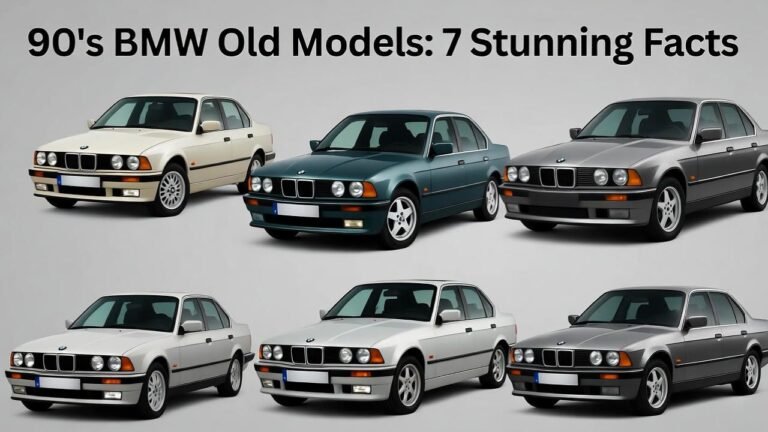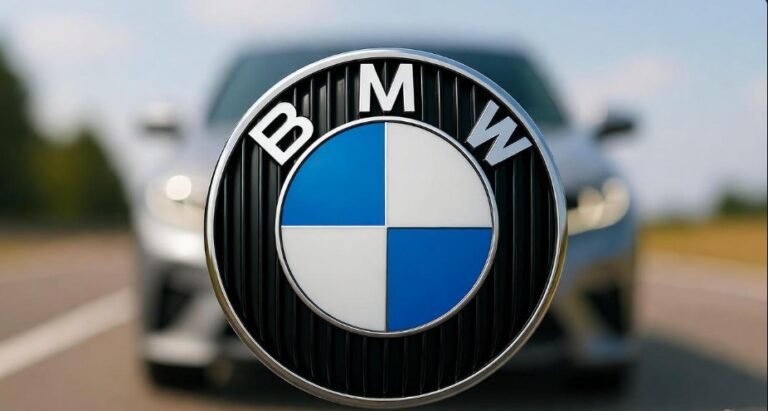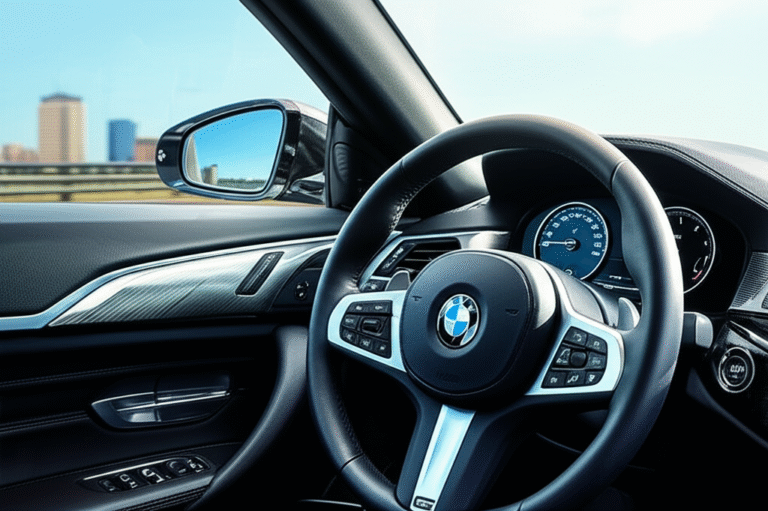BMW 320d Tyre Size: 5 Critical Specs
Choosing the right BMW 320d tyre size is crucial for performance, safety, and fuel efficiency. This guide breaks down the 5 critical specs you need to know, simplifying your decision for optimal driving.
Key Takeaways
- Confirm your BMW 320d tyre size accurately.
- Understand tyre load index for safety.
- Verify speed rating for your driving style.
- Check tyre pressure for optimal performance.
- Explore tyre seasonality for year-round grip.
Navigating the world of car maintenance can feel overwhelming, especially when it comes to something as vital as your BMW 320d tyre size. You want to ensure your luxury sedan performs at its best, feels secure on every corner, and sips fuel efficiently. Incorrect tyre sizes can lead to poor handling, premature wear, and even compromise your safety. But don’t worry, this guide is here to simplify everything. We’ll walk you through the 5 critical specifications you need to know when selecting the perfect tyres for your BMW 320d. Let’s get your ride prepped for the road ahead.
Understanding Your BMW 320d Tyre Size: A Comprehensive Guide
Your BMW 320d is engineered for a precise driving experience. The tyres are a fundamental part of this equation, directly impacting how your car grips the road, handles turns, and maintains stability. When it’s time for a replacement, knowing the exact specifications for your BMW 320d tyre size isn’t just about fitting the right rubber; it’s about preserving the vehicle’s intended performance characteristics and ensuring your safety. This article will demystify these specifications, empowering you to make informed decisions.
Why BMW 320d Tyre Size Matters So Much
The BMW 320d, known for its blend of performance and efficiency, relies heavily on its tyre specifications to deliver its signature driving dynamics. Think of tyres as the only point of contact between your car and the road. Every bump, every turn, every braking maneuver is managed through these four contact patches. Selecting the correct BMW 320d tyre size ensures that the vehicle’s sophisticated suspension, braking systems, and stability controls function as intended. An incorrect size can throw off crucial measurements like speedometer accuracy, anti-lock braking system (ABS) calibration, and even the effectiveness of electronic stability control (ESC). Beyond performance, the right size optimizes fuel economy and minimizes uneven tyre wear, saving you money in the long run.
The 5 Critical Specs for Your BMW 320d Tyre Size
When you look at the sidewall of a tyre, you’ll see a string of numbers and letters that might look like a secret code. This code, however, contains all the essential information about that tyre. For your BMW 320d, understanding these specific details is key to selecting the right replacement. Let’s break down these five critical specs that define your BMW 320d tyre size.
1. Tyre Section Width (e.g., 225)
The first number in the tyre size designation, like 225 in “225/45R17,” indicates the tyre’s section width in millimeters. This measurement is taken from the tyre’s sidewall to sidewall at its widest point, not including any protective ribs or bead protectors. A wider tyre generally offers more grip and better handling, especially in dry conditions, by increasing the contact patch size. However, it can also lead to slightly higher fuel consumption and potentially a harsher ride. Conversely, a narrower tyre might offer better fuel efficiency and perform better in wet or snowy conditions due to a more concentrated pressure on the road surface. For the BMW 320d, the manufacturer specifies a range of suitable widths to balance these characteristics for its intended performance profile.
How to Find Your Tyre Section Width
Your tyre’s sidewall is the primary source of this information. Look for a sequence of numbers and letters that typically starts with a three-digit number.
Example: If your tyre reads 225/45R17, the “225” is the section width in millimeters.
2. Aspect Ratio (e.g., 45)
The second number, following a slash, represents the aspect ratio. This is expressed as a percentage of the tyre’s section width. So, in our “225/45R17” example, 45 means the tyre’s sidewall height is 45% of its width (225 mm). A lower aspect ratio (e.g., 40, 35) indicates a shorter sidewall, often referred to as “low-profile” tyres. These tyres provide a more direct feel of the road, quicker steering response, and better cornering stability due to less sidewall flex. However, they also mean less cushioning, potentially leading to a harsher ride and increased risk of wheel damage from potholes. Higher aspect ratios (e.g., 55, 60) mean taller sidewalls, offering a more comfortable ride and better impact absorption but with slightly less precise handling.
Interpreting Aspect Ratio for Your BMW 320d
The aspect ratio is a critical factor in maintaining the overall diameter of the wheel and tyre assembly. Keeping this consistent is vital for speedometer accuracy and the proper functioning of vehicle dynamics systems. BMW engineers carefully select aspect ratios for specific models like the 320d to achieve a balance between comfort, handling, and fuel efficiency.
3. Tyre Construction (e.g., R)
The letter following the aspect ratio denotes the tyre’s construction type. For the vast majority of modern passenger vehicles, including the BMW 320d, this will be an “R” for Radial construction. Radial tyres have internal plies that run radially across the tyre from bead to bead, with reinforcing belts placed underneath the tread. This design allows the sidewall and tread to operate more independently, leading to better heat dissipation, improved fuel efficiency, and a more comfortable ride compared to older bias-ply constructions. You might occasionally see a “B” for Bias-ply, but this is extremely rare for contemporary cars like the 320d.
Radial Construction: The Standard for BMW 320d
Modern tyre technology overwhelmingly favors radial construction for its superior performance characteristics. When selecting tyres for your BMW 320d, you will almost certainly be choosing radial tyres to maintain the vehicle’s engineered ride quality and handling.
4. Wheel Diameter (e.g., 17)
The number following the construction letter indicates the diameter of the wheel that the tyre is designed to fit, measured in inches. So, in “225/45R17,” the “17” signifies that this tyre fits a 17-inch wheel. BMW 320d models often come with various wheel size options from the factory, typically ranging from 16 to 19 inches, sometimes even larger depending on the specific trim and year. Larger diameter wheels, when paired with lower aspect ratio tyres, generally offer sharper steering response and a sportier aesthetic. However, they also tend to be heavier, which can impact acceleration and fuel economy, and provide a less comfortable ride due to the reduced sidewall. It’s essential to match the tyre’s diameter specification to your car’s existing wheel size unless you are planning a wheel upgrade.
Matching Tyre Diameter to Your Wheels
This specification is straightforward: the tyre must physically fit the wheel. Using a tyre with the wrong diameter will not only prevent installation but could also be extremely dangerous. Always refer to your car’s manual or the markings on your current wheels to confirm the correct diameter.
5. Load Index (e.g., 94)
The load index is a numerical code that corresponds to the maximum weight each tyre can support when properly inflated. This is a critical safety feature. A tyre with an insufficient load index can fail under load, leading to a dangerous blowout. The load index is typically found at the end of the tyre size marking or just before the speed rating. You’ll need to consult a load index chart to determine the maximum weight capacity for a given number. For instance, a load index of 94 indicates a maximum load of 670 kg (1,477 lbs) per tyre. BMW specifies a minimum load index for the 320d to ensure it can safely handle the vehicle’s weight plus passengers and cargo. Always choose a tyre with a load index that meets or exceeds the manufacturer’s recommendation.
Finding the Load Index Chart
You can easily find load index charts online by searching for “tyre load index chart.” Reputable tyre manufacturers and automotive resources provide these charts for reference.
Example table for common load index values:
| Load Index | Load (kg) | Load (lbs) |
|---|---|---|
| 91 | 615 | 1,356 |
| 92 | 630 | 1,389 |
| 93 | 650 | 1,433 |
| 94 | 670 | 1,477 |
| 95 | 690 | 1,521 |
| 96 | 710 | 1,565 |
| 97 | 730 | 1,609 |
| 98 | 750 | 1,653 |
6. Speed Rating (e.g., Y)
Following the load index, you’ll find the speed rating, represented by a letter. This indicates the maximum speed at which the tyre can safely carry a load corresponding to its load index. For a performance-oriented car like the BMW 320d, the speed rating is particularly important for maintaining handling and stability at higher velocities. Common speed ratings include H (210 km/h or 130 mph), V (240 km/h or 149 mph), W (270 km/h or 168 mph), and Y (300 km/h or 186 mph). It’s crucial to match or exceed the manufacturer’s recommended speed rating. While you might not drive at these speeds regularly, the rating reflects the tyre’s construction and performance capabilities, even at legal speeds. Using a tyre with a lower speed rating than recommended can compromise safety and handling, especially during spirited driving or emergency maneuvers.
Speed Rating Explained
Think of the speed rating as a performance indicator for the tyre’s structural integrity at high speeds. A higher speed rating generally means a tyre is designed for more demanding conditions and may offer sharper handling.
Example table for common speed ratings:
| Speed Rating | Max Speed (km/h) | Max Speed (mph) |
|---|---|---|
| H | 210 | 130 |
| V | 240 | 149 |
| W | 270 | 168 |
| Y | 300 | 186 |
Where to Find Your BMW 320d’s Recommended Tyre Size
Figuring out the correct BMW 320d tyre size doesn’t have to be a guessing game. Manufacturers provide this information in several convenient locations on your vehicle. Knowing where to look ensures you get the most accurate specifications for your specific model and trim level.
Consult Your Owner’s Manual
The most definitive source for your BMW 320d’s recommended tyre size is its owner’s manual. This comprehensive guide details all aspects of your vehicle, including the approved tyre sizes, load capacities, and inflation pressures for various driving conditions. Keep your manual in a safe place; it’s an invaluable resource for all your car care needs.
Check the Driver’s Side Doorjamb
A common and easily accessible location for tyre information is a sticker found on the driver’s side doorjamb or the inside edge of the driver’s door. This sticker typically lists the original equipment tyre size, recommended front and rear tyre pressures, and sometimes even load index and speed rating information. It’s a quick and practical place to get the details you need.
Look Inside the Fuel Filler Flap
Another common spot for tyre information is inside the fuel filler flap. Open the flap and look for a sticker or placard. This location is also frequently used by manufacturers to provide this crucial data.
Common BMW 320d Tyre Sizes
While exact specifications can vary by model year, generation (like the F30, G20, etc.), and optional equipment, here are some of the most frequently found BMW 320d tyre sizes:
- 205/60R16: Often found on base models or as a standard option for comfort-focused configurations.
- 225/50R17: A very common size, offering a good balance of ride comfort and handling.
- 225/45R18: Popular for models equipped with sportier suspension or optional larger wheels, providing enhanced aesthetics and sharper response.
- 245/40R18: Frequently used for the rear axle on staggered setups (where front and rear tyres differ in width for performance handling) or as a standard on higher trims.
- 225/40R19 & 255/35R19: For models with optional 19-inch wheels, offering maximum sporty appeal and handling, but with a firmer ride.
Always confirm your specific vehicle’s requirement using the methods mentioned above, as these are general examples.
Beyond Size: Other Crucial Tyre Considerations for Your BMW 320d
While the numerical designation of your BMW 320d tyre size is paramount, several other factors significantly influence your driving experience, safety, and the longevity of your tyres. Don’t overlook these critical aspects when making your selection.
Tyre Pressure: The Unsung Hero
Proper tyre pressure is one of the simplest yet most critical aspects of tyre maintenance. Under-inflation can lead to poor handling, increased fuel consumption, and premature wear on the outer edges of the tyre. Over-inflation can cause a harsh ride, reduced traction, and uneven wear on the center of the tread. The recommended tyre pressure for your BMW 320d can be found on the sticker in the driver’s side doorjamb or in the owner’s manual. Always check your tyre pressure when the tyres are cold (before driving or after sitting for at least three hours).
Pro Tip: Invest in a reliable digital tyre pressure gauge. It’s an inexpensive tool that can save you money and improve your driving safety.
Seasonality: All-Weather vs. Specific-Season Tyres
The climate in your region dictates whether all-season tyres are sufficient or if you should consider seasonal tyre changes. All-season tyres are designed to provide a compromise of performance in a range of temperatures and conditions, from mild heat to light snow. However, in areas with harsh winters and significant snowfall, dedicated winter tyres offer far superior grip and safety. Conversely, summer tyres are optimized for warm-weather performance, providing excellent dry and wet grip but performing poorly in cold temperatures.
Should You Use Winter Tyres?
If you live in a region that experiences temperatures consistently below 7°C (45°F) or heavy snowfall, switching to winter tyres is highly recommended. Winter tyres are made with a special rubber compound that stays flexible in the cold and feature aggressive tread patterns designed to bite into snow and ice. Organizations like the National Highway Traffic Safety Administration (NHTSA) emphasize the safety benefits of using appropriate tyres for winter conditions. For example, some US states and Canadian provinces have regulations regarding winter tyre usage during specific months.
Tread Wear Rating (UTQG)
The Uniform Tire Quality Grading (UTQG) system, mandated by the National Highway Traffic Safety Administration (NHTSA), provides a standardized way to compare tyre treadwear, traction, and temperature resistance. While not directly part of the size designation, the treadwear number (e.g., 300, 400, 500) indicates how long the tyre is expected to last under normal driving conditions. A higher number suggests a longer lifespan. This can be a valuable factor when deciding between different brands or models of the same size.
Tyre Brand and Quality
Not all tyres are created equal, even when they share the same size. Premium tyre manufacturers invest heavily in research and development, resulting in tyres that offer superior grip, durability, ride comfort, and noise reduction. While budget tyres might seem appealing, they often compromise on performance and longevity. For a vehicle like the BMW 320d, which is designed for a premium driving experience, investing in quality tyres from reputable brands like Michelin, Continental, Pirelli, or Goodyear is often worthwhile to maintain its performance and comfort.
When to Replace Your BMW 320d Tyres
Tyres don’t last forever, and knowing when to replace them is crucial for safety. Beyond simply looking at the size, there are specific indicators to watch for.
- Tread Depth: The legal minimum tread depth in most parts of the US is 2/32 of an inch. However, performance and safety significantly degrade long before this point. Many experts recommend replacement when tread depth reaches 4/32 of an inch, especially for wet or winter conditions. You can check this using a tread depth gauge or the “penny test” (insert a penny into the tread groove with Lincoln’s head upside down; if you can see the top of his head, it’s time for new tyres).
- Age: Tyres degrade over time due to exposure to UV rays, heat, and oxygen, even if they have plenty of tread left. Most manufacturers recommend replacing tyres that are 6 years old or older, regardless of appearance. Check for a DOT code on the sidewall, which includes the manufacturing date (last four digits indicate week and year).
- Damage: Look for visible signs of damage such as cuts, cracks, bulges, blisters, or punctures on the sidewall or tread. Any significant deformation or penetration warrants immediate tyre inspection and likely replacement.
- Uneven Wear: As mentioned earlier, uneven wear patterns (e.g., wear on one edge, cupping, or flat spots) can indicate alignment issues, suspension problems, or improper inflation, but it also signifies that the tyre’s lifespan is compromised and may need replacement sooner than expected.
Frequently Asked Questions (FAQs) About BMW 320d Tyre Size
What is the most common BMW 320d tyre size?
The 225/50R17 size is one of the most common and versatile tyre sizes found on many BMW 320d models, offering a good balance of performance and comfort.
Can I use a different tyre size than what’s recommended?
While minor variations might be permissible if the overall diameter remains very close to the original, it’s strongly advised to stick to the manufacturer’s recommended BMW 320d tyre size. Deviating can affect speedometer accuracy, ABS/ESC function, ride quality, and even vehicle stability.
How does tyre pressure affect my BMW 320d’s performance?
Correct tyre pressure is vital. Under-inflation reduces handling precision and increases fuel consumption. Over-inflation leads to a harsher ride and reduced grip. Always adhere to the pressures listed on your car’s doorjamb sticker.
Do I need to replace all four tyres at once?
It is generally recommended to replace all four tyres simultaneously to ensure even wear, consistent handling, and optimal performance, especially on an all-wheel-drive BMW 320d. If you must replace only two, it’s best to replace the pair on the same axle (both front or both rear).
What does the “XL” rating mean on some BMW 320d tyres?
“XL” stands for Extra Load. These tyres have a higher load-carrying capacity than standard tyres and are often fitted as original equipment on heavier vehicles or performance models like some BMW 320d variants to meet specific load requirements.
How often should I check my tyre tread depth?
It’s a good practice to check your tread depth at least once a month, and before and after long trips. Regular checks help you identify potential issues early and ensure you’re driving safely.
What is the difference between a summer tyre and an all-season tyre for a BMW 320d?
Summer tyres offer superior grip and performance in warm conditions (above 7°C or 45°F) but are not designed for cold or snow. All-season tyres are a compromise, intended to provide acceptable performance across a wider temperature range but may not match the peak performance of dedicated summer or winter tyres.
Conclusion
Selecting the correct BMW 320d tyre size is fundamental to maintaining the sophisticated performance, safety, and efficiency that BMW vehicles are known for. By understanding the critical specifications—section width, aspect ratio, construction type, wheel diameter, load index, and speed rating—you can confidently choose the right tyres for your car. Remember to always consult your vehicle’s manual or doorjamb sticker for the precise recommendations and to pay attention to other vital factors like tyre pressure, seasonality, and tread wear. Making informed tyre choices ensures you continue to enjoy the exhilarating and secure driving experience your BMW 320d provides, mile after mile.




